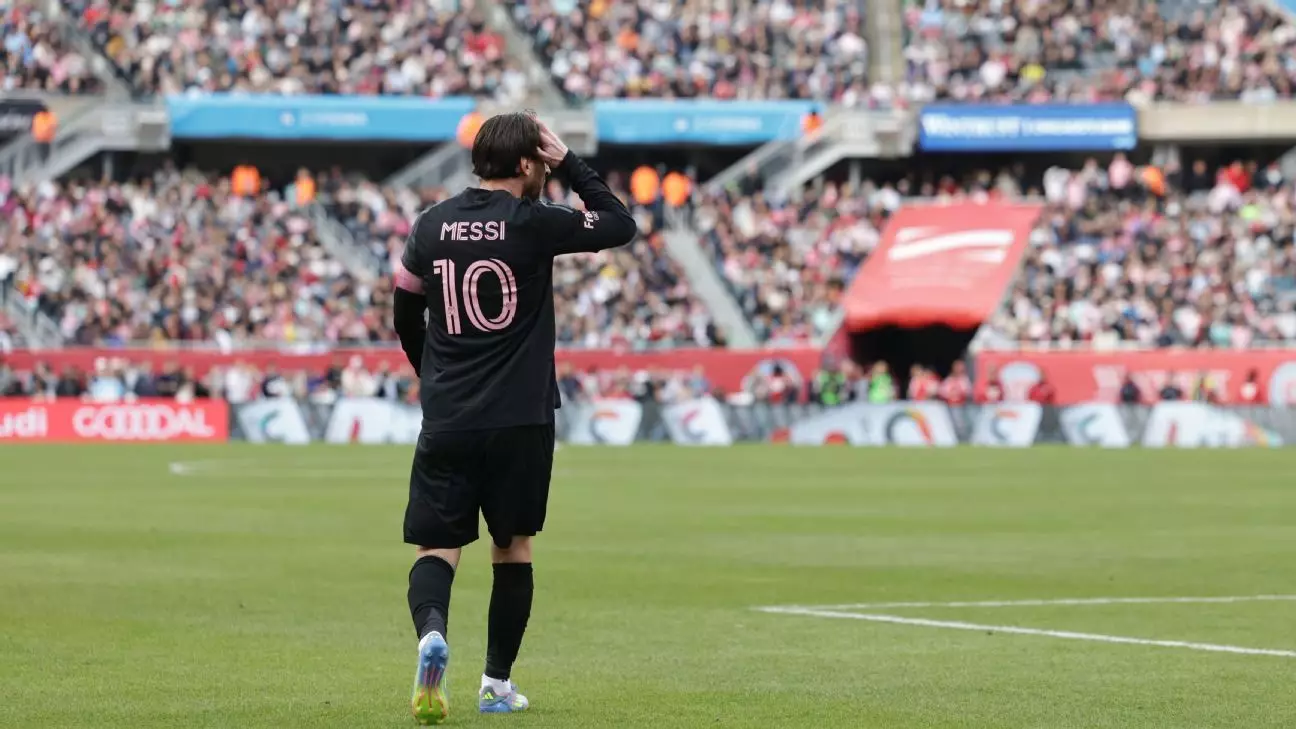Since Lionel Messi graced the fields of Major League Soccer (MLS) with his unparalleled talent, the landscape of American soccer has undergone a notable transformation. Inter Miami coach Javier Mascherano believes that Messi’s presence is reshaping the perception of soccer in the United States, and rightly so. When a figure of Messi’s stature joins a league, the waves of impact are undeniable. His mere participation is not only a catalyst for increased viewership but also a significant boost to the league’s credibility and global appeal. During a recent match against Chicago Fire—which unfortunately ended in a 0-0 draw—Mascherano reflected on how Messi’s arrival has made MLS more visible to fans worldwide.
This transformative effect can be quantitively analyzed through attendance metrics. For instance, the iconic Soldier Field in Chicago recorded a staggering attendance of 62,358 fans, driven largely by the allure of seeing Messi in action. It’s not just another number; it’s a testament to how Messi has elevated interest in soccer within a nation that has traditionally prioritized sports like football and basketball. Other clubs in the league have also benefited, as evidenced by the record-breaking crowds that flocked to see Messi play against the New England Revolution and Sporting Kansas City. Such occurrences highlight an essential truth: Messi is not just a player; he’s a phenomenon.
Challenges in Competing at High Levels
Despite the infectious enthusiasm that Messi brings, the results on the field have been mixed for Inter Miami. A draw, especially against a team like Chicago Fire, is not ideal for a side aspiring to lead the Eastern Conference. Currently, Inter Miami finds itself in third place but remains just a point shy of the top spot. However, Mascherano pointed to a grueling schedule as a possible explanation for the struggle to score—Inter Miami has had a busy two months, balancing MLS commitments and the Concacaf Champions Cup. The expectation for an elite performance against the backdrop of fatigue is a legitimate concern that may need to be addressed.
Certainly, Messi’s unmatched skills deserve to be complemented with a cohesive team effort. While Messi can single-handedly create magic on the pitch, soccer is ultimately a team sport that thrives on collective synergy. The contrast in attacking metrics between Inter Miami and Chicago Fire during their recent encounter—10 shots with only three on target compared to Chicago’s 16 shots and seven on target—highlights the need for improvement in offensive tactics. Recognizing fatigue but also the opportunity for growth, Mascherano’s acknowledgment of his team’s clean sheet against a competitive opponent is commendable, yet one cannot help but wonder if the team can find the rhythm it needs to translate Messi’s star power into tangible success.
An Uneven Playing Field
Moreover, the wave of attendance records broken by clubs playing against Inter Miami underscores a larger theme within the league: the competitive imbalance that comes with marquee players. While Messi undoubtedly draws crowds, it raises questions about market equity and long-term sustainability. Will teams with star players like Messi always outpace those without? There exists a delicate balance between fostering talent across the league and allowing a few superstar players to dominate the narrative. As Mascherano stated, MLS has a responsibility to keep advancing, ensuring that the successes built on Messi’s back will extend far beyond just one player’s ability to command attention.
The sensationalism surrounding Messi also begs a broader conversation about the priorities of the MLS. Should the focus remain primarily on marketing superstars, or should efforts be equally invested in developing home-grown talent and expanding the competitive landscape? It’s crucial for the league to nurture rising stars while also celebrating legends like Messi. An equitable approach to talent development will not only help in maintaining fan engagement but will also enhance the quality of soccer in America in the long run.
As Inter Miami prepares to face the Columbus Crew and tackle the next phase in the Champions Cup against the Vancouver Whitecaps, they must leverage Messi’s magnetism while addressing the challenges that come with a high-profile player. There is a fine line between relying on a generational talent and fostering a holistic, competitive team. In this pivotal moment for both the club and the league, the future of MLS hangs in the balance, influenced heavily by whether Messi’s magic can galvanize a renaissance for the sport in the United States.

